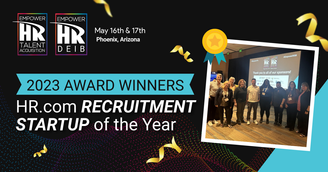The downsides of outsourced recruiting
This has become more common in the past decade, absolutely. In November 2019, Dice wrote an article about the trend lines, citing some of the common issues that organizations face. Namely: they can’t find the right people, they can’t articulate the skills those people need and judge them on those skills, there’s confusion between team/product leads and HR/recruiters, etc. Many of you have experienced this arc dozens of times.
The Dice article also quotes a Jobvite study from 2018 showing 67% of the founder- and executive-level say their biggest challenge is finding the right people.
That’s actually an under-discussed theme of the last 10 years: more and more founders have a technical background, and more and more key executives do as well. So they understand the technical skills needed for roles and product teams, but … they’re often so removed from the day-to-day process of hiring that they don’t know the full scope of what’s going on.
Outsourcing technical recruiting efforts can feel like a cost savings play, which executives tend to gravitate towards, and it can feel like you’re doubling down on true expertise in terms of a recruiter who knows what questions to ask and has the right technical background. Sometimes you gamble with a third-party technical recruiting provider and lose, however. RPO is a big industry, and it’s growing, but the perceptions around quality of hire are not always great.
Asking Technical Questions:
Admittedly, there is a good chance that your recruiters won’t be experts in every technology, coding language, personalization approach, or whatever else. That’s not why you hired them as recruiters, though. You hired other people, with different expertise, for coding and tech stack work.
What needs to happen internally, then, is a dance that goes something like this:
- Hiring managers should provide clear questions to recruiters — technical questions that the candidate should be comfortable asking.
- On the first — yes, the first — interview, the recruiter should be asking those.
- When the candidate answers, those answers should be recorded, as opposed to the recruiter scribbling down interview notes on a topic he/she may not understand.
- Those recordings should subsequently go back to the product lead, hiring manager, technical manager, or whomever.
- They can compare the recordings of different candidates and know who is a fit and who isn’t from those answers.
- Then the product lead/hiring manager goes back to the recruiter and says “I would like to talk to these three candidates. Thank you.”
That arc above saves time and money.
Here’s the problem inside many organizations: the first interview is often very generic questions + knockout questions, and for more technical or product-driven roles, you don’t get to any “meat.” Then, you move up the salary ladder in terms of interviewers, so a product lead with P&L responsibility — whose time is, by definition, more valuable — now has to get on a call with someone utterly unqualified for the role, and the product lead will know that within 90 seconds (maybe sooner).
Now the product lead is mad at the recruiter (“You wasted my time!”) and the recruiter is worried and frustrated (“I don’t know the technical stuff to ask!”) and the relationship suffers.
You could change the entire course of that relationship, and your hiring process, by just recording answers to technical questions that can then be directly compared.
Interview collaboration
When people hear the term “interview collaboration,” usually their mind goes to team-based hiring, i.e. after the hiring manager screen is done, he/she sends the candidate to meet with members of the existing team. Team-based hiring is effective according to most research on it, but … it’s time-consuming (it way extends time to hire) and it’s costly (you’re pulling whole teams away from work 2-3 times to assess candidates).
When we say “interview collaboration,” this is what we’re talking about: hiring managers provide the guidance on questions and absolute must-have needs. Recruiters do the legwork of scheduling and conducting the first-rounds. Audio is captured (by us at HoneIt). Then, HoneIt integrates with platforms like Slack, so once the recruiters hangs up, they can Slack message a candidate’s HoneIt link to the hiring manager. Boom. Let’s assess talent together.
That’s interview collaboration. It’s somewhat of a take on “talent intelligence” from Taleo a decade or so ago.
Now recruiters, in this interview collaboration model, can:
- Show their work.
- Ask better questions.
- Go deeper with candidates.
- Save time for the product leads and hiring managers.
Ultimately, all this is in service of the relationship between hiring managers and the recruiting function. If that relationship is straight-up broken and each side is distrustful of each other, there’s no way to get good talent in the door. If that relationship is thriving and collaborative and time-saving, now we’re headed towards that mythical Purple Squirrel universe.
Interview collaboration and less-shoddy technical interviews: the future, yes?



